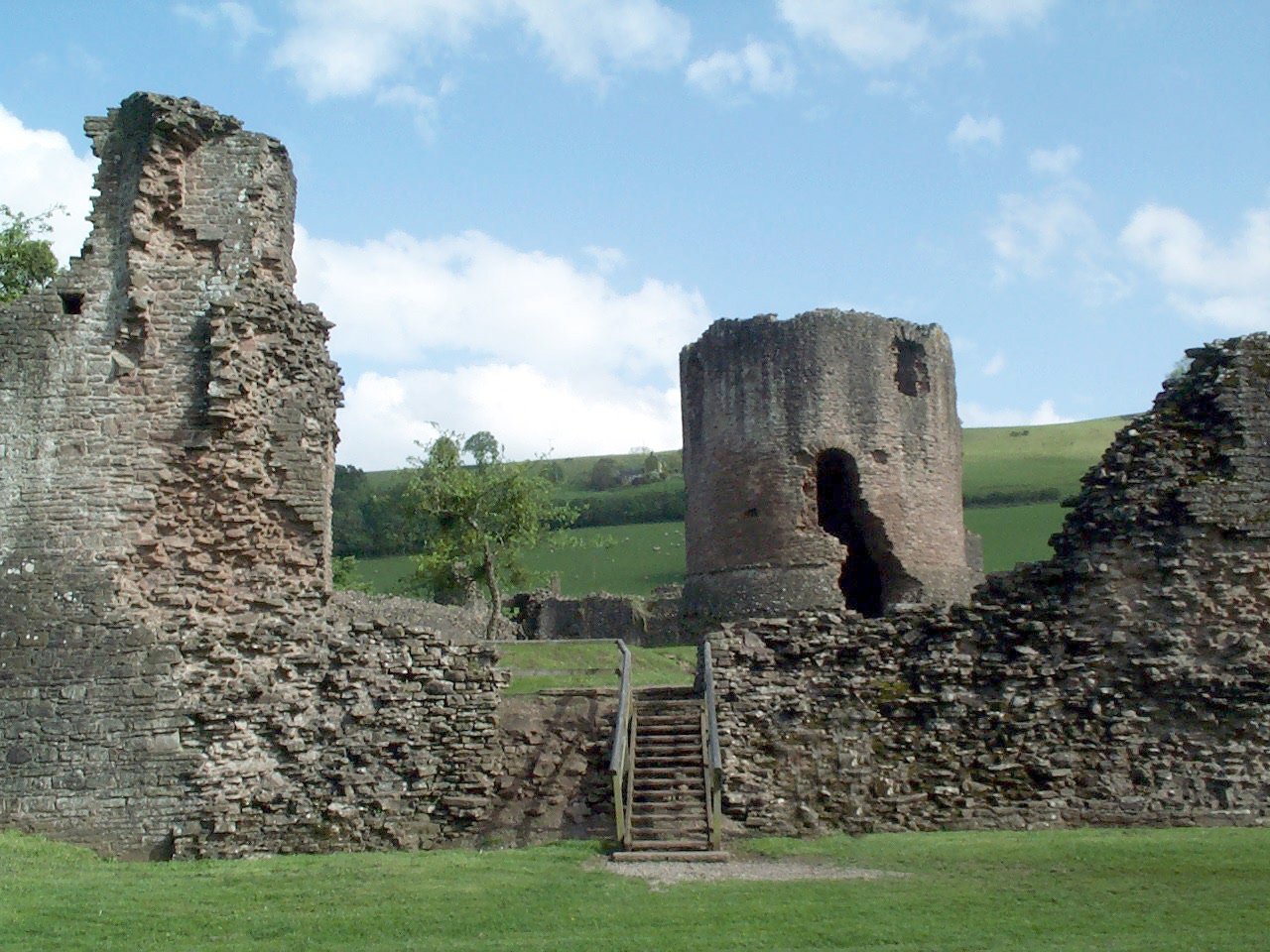Skenfrith

This is the only riverine
fortress of the three castles of Skenfrith, Grosmont
and White Castle, now
known as the Trilateral.
Like the other 2 castles, Skenfrith is remarkably well-preserved,
standing mostly to wallwalk height. Unfortunately there is no
early reference as to the foundation of this fortress, though a castle
certainly existed here by 1160 when it came into the king's hands with
Grosmont and White Castle. In 1187 the engineer Ralph
Grosmont was instructed by King Henry II
to rebuild the castle in stone. The eastern wall and possibly
the north-east tower of the castle, built in a totally different style from the
rest of the fortress, was constructed by Ralph. However, this
work proved abortive and Henry II cancelled the building work in 1188
as unnecessary. In 1193, Sheriff William Braose pushed the
unfinished castle into rapid service by placing a palisade around the
other three sides of the ditch. A prison was later built
within the stockade.
From 1200 Skenfrith castle has largely the same history as Grosmont castle. In
1219 Hubert Burgh (d.1243), the defender of Chinon in
1204-5 and Dover in
1216 began to build the other 3 sides of the unfinished castle
enceinte in stone. His work is characterized by the fine and
high batter on the north, south and west sides. Yet, before a year
was out, this castle was devastated by heavy flooding in the Monnow
valley. Hubert therefore filled the interior of the first
castle with river gravel and built a new castle on top of the first
one! The hall of this first castle still remains, having been
buried in gravel from 1220 until the 1950s excavations. This
hall is remarkably well-preserved with the jambs of doors and windows
in as good a condition as when they were first cut nearly 800 years
ago. Even the original iron door hinges and window bars have
survived from this era. In 1239 the castle was seized by King Henry III,
who in 1244 placed a lead roof on top of the king's tower or central
keep. This round tower in the middle of the castle was the
last part of the fortress constructed by Hubert Burgh, and is not, as
is often stated, built on the old castle motte. The recent
excavations conclusively proved that this tower was built on top of the
thirteenth century gravel used to infill the first castle of
1219. Another dating feature of this tower can be found in
the collapsed stairway built into a buttress in its western
wall. This is not a standard spiral stair, but a series of
semi-circular stairways. Although much damaged it can be seen
to have been similar to the stairs that still exist in the gatehouse of
White Castle.
This work, with its unusual stairs, is also thought to have been
undertaken by Earl Hubert Burgh. A list of other round tower keeps can be found in the description of Llanstephan castle and a general list of round keeps is found under Dundrum.
The fortress was once
surrounded by a 20' deep paved moat which fed a mill to the
south. Today the castle stands mostly to wall walk height and
is in much the same state as it was in 1538 when the antiquarian Leland
noted that Skenfrith castle ‘yet standith'. Other
round keeps in the vicinity stand at Pembridge,
Tretower, Longtown and Bronllys. The
round keep at Monmouth has been demolished.
Why
not join me at other Lost Welsh Castles next Spring?
Please see the information on tours at Scholarly
Sojourns.
Copyright©2019
Paul Martin Remfry
